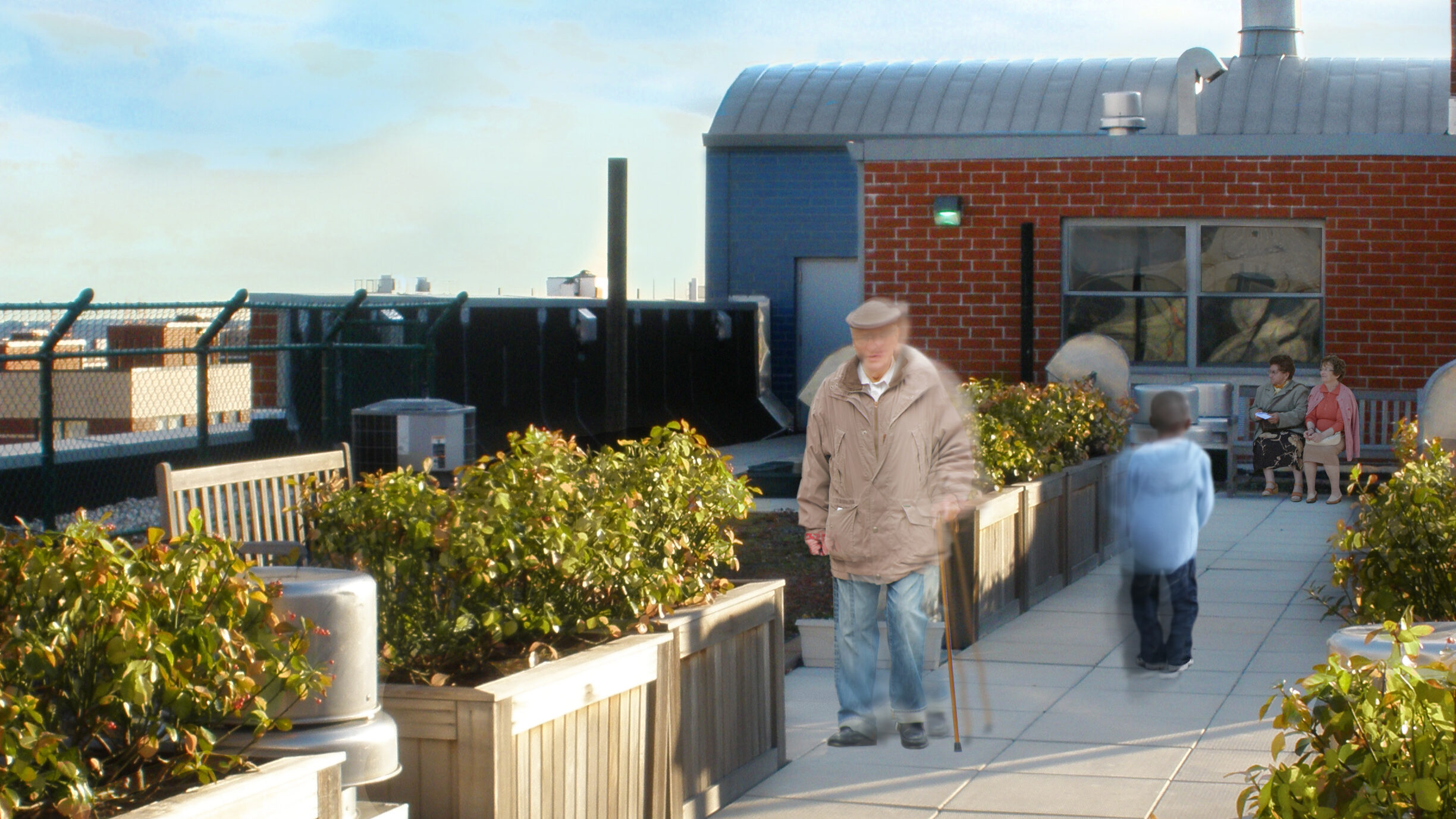
Rooftops and the New Uses to Advance Sustainability and Human Wellness
Eric Goshow, FAIA
December 5, 2022
New York City has been finding ways and passing legislation to reduce the carbon footprint of our buildings. For example, NYC Local Law 92 and 94 are part of New York City’s Climate Mobilization Act (CMA) of 2019. They are a pair of laws mandating the installation of sustainable roofing zones on all rooftops undergoing major construction, both for new and existing roofs. These two pieces of legislation are grouped together because they both set forth the requirements for this specific mandate. LL 94 requires sustainable roofing zones on all new construction and major roof renovations, while LL 92 adjusts the requirements for smaller buildings.
Architects citywide have lauded this legislation for two reasons: 1) it is part of NYC’s goal of reducing our city’s carbon footprint by reducing our dependence on fossil fuel consumption, and 2) because our legislators have finally recognized the considerable value of the city’s – hidden in plain sight – real estate: building rooftops.
In so many of our high-density neighborhoods, especially residential and commercial ones, building “improvements” (buildings) take up almost all of the land, leaving mostly sidewalks and streets. So where is there space opened to the sky? Rooftops! And what should we do with them to place them into use as valuable assets? How about creating vegetation or gardens to absorb carbon dioxide pollution, and/or installing solar panels to generate energy to help light or air condition the building? LL’s 92 and 94 encourage us to rethink how we can make use of this long-undervalued asset. Beyond that, roofs can also be used in combination with the above as rainwater retention basins, reducing the amount of water flowing into our undersized sewer system during heavy rainfalls.
When it comes to new construction these issues can be easily resolved. But when renovating existing building roofs there are challenges. The first is that most existing buildings were not designed to carry the additional weight imposed on their roofs by gardens or solar panels. Also, heating or cooling or electrical equipment, plumbing vents, fans, drains, and other obstructions, were randomly placed across roofs because they were to be used for nothing else so who cared? Existing roofing material, often fragile, would need to be replaced by properly warrantied and insulated roofing assemblies capable of holding up to the imposition of new stuff on the roof. And will the new roofing keep water from leaking into the floors below? So professional advice is necessary. And all of this costs money.
The second challenge is the willingness of building owners and the real estate industry to overcome their typical reaction to putting anything on a supposedly fragile roof. They (we) worry about leaks, about roof warranties, about time, about money. Tax breaks can help this somewhat, but it’s still a hard sell. We all want to do the right thing regarding the environment, but not so much if it costs us money. Further though, policing such laws may in themselves be a costly logistical nightmare.
But there is another challenge and a huge benefit for using building rooftops: as places for people. This is where the “human wellness” side of the issue resides and is more easily achievable in new construction. Existing building rooftops for people must be analyzed for occupancy, legal egress, and fire safety and not every building can readily comply with these building codes. But given the lack of outdoor open space in high density neighborhoods, aren’t rooftops ideal for people in warm months, and is this not a highest-and-best use of these places? If we are willing to spend time and effort and money to make our roofs viable for something, shouldn’t that something include people in conjunction with the other stuff?
But isn’t it great and long overdue that use of our rooftops is finally part of the conversation?

